Theyyam : The God in Orange
India
In South India, there are mystical, deeply rooted festivals dedicated to unique local deities.
*Shocking photos are included.
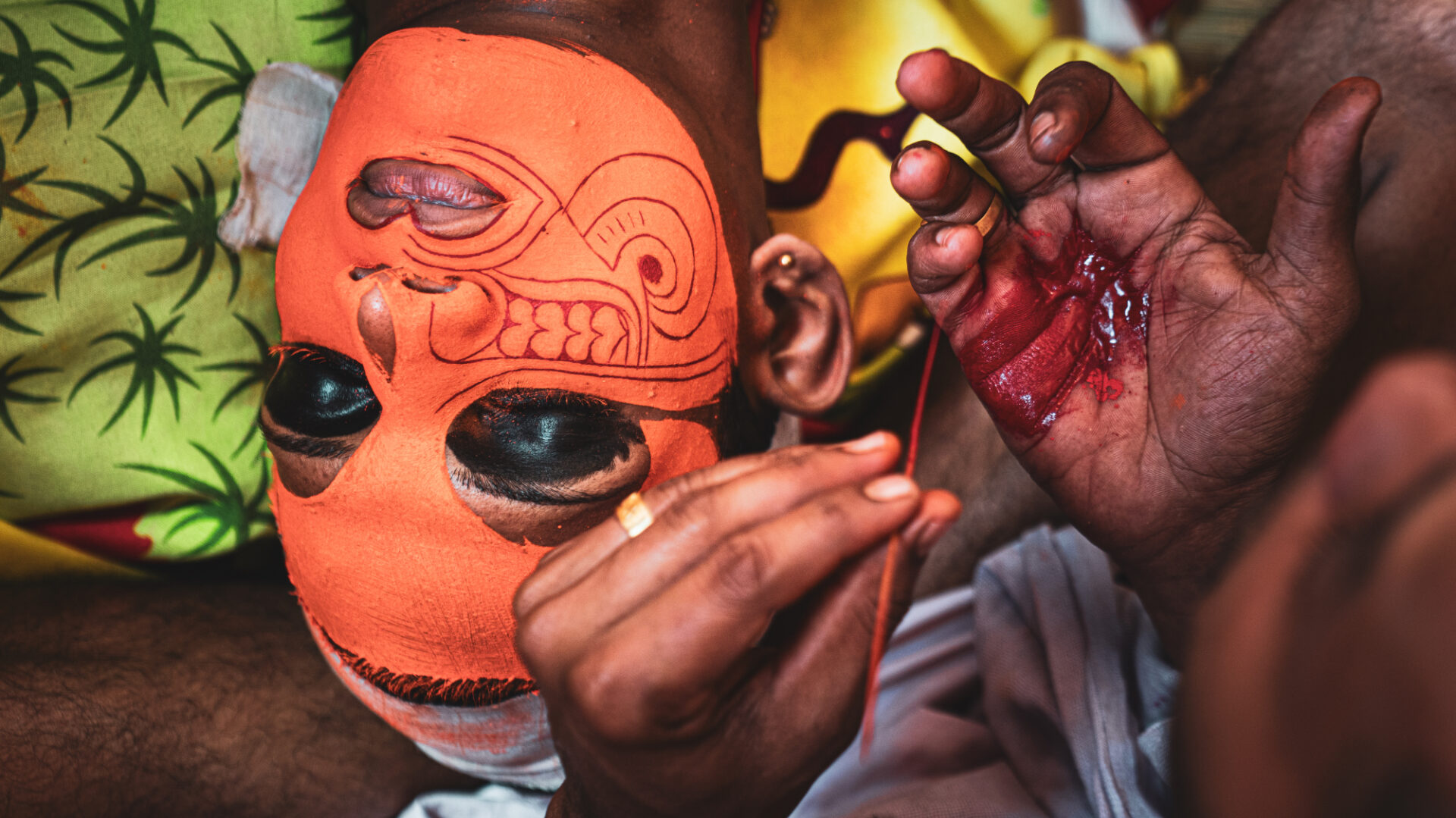
The most striking feature of Theyyam is the moment when a human being is believed to become a living deity. The performers are men belonging to specific communities such as the Malayan, Vannan, Pulayan, and Peruvannan, who inherit their roles across generations and learn the sacred forms and behaviors of the deities they embody. Adorned in elaborate sacred makeup and masks featuring vivid reds and oranges, and wearing massive skirt-like costumes made from palm leaves and bamboo, the performers enter a trance-like state guided by the rhythm of drums, appearing before the audience as embodiments of the divine.
Theyyam is a unique religious ritual deeply influenced by Dravidian culture and indigenous beliefs that predate Aryan cultural influences, and it has integrated with Hinduism over a long period. During the festival, acts of prayer, dance, prophecy, and healing take place, and in specific rituals or for certain deities, the offering of chickens as a form of sacrifice is also conducted.
For the local people, Theyyam is not merely a form of art or a cultural tradition—it is the divine itself, a sacred moment when the deity is believed to descend directly into the village to protect and guide its people. The fact that individuals from communities who traditionally perform these roles are worshipped as deities during the rituals underscores the profound spiritual and social significance of this tradition within the community.
The visually and spiritually overwhelming experience offers a rare and powerful glimpse into the depth and diversity of Indian culture and the intricate connection between religion and society.
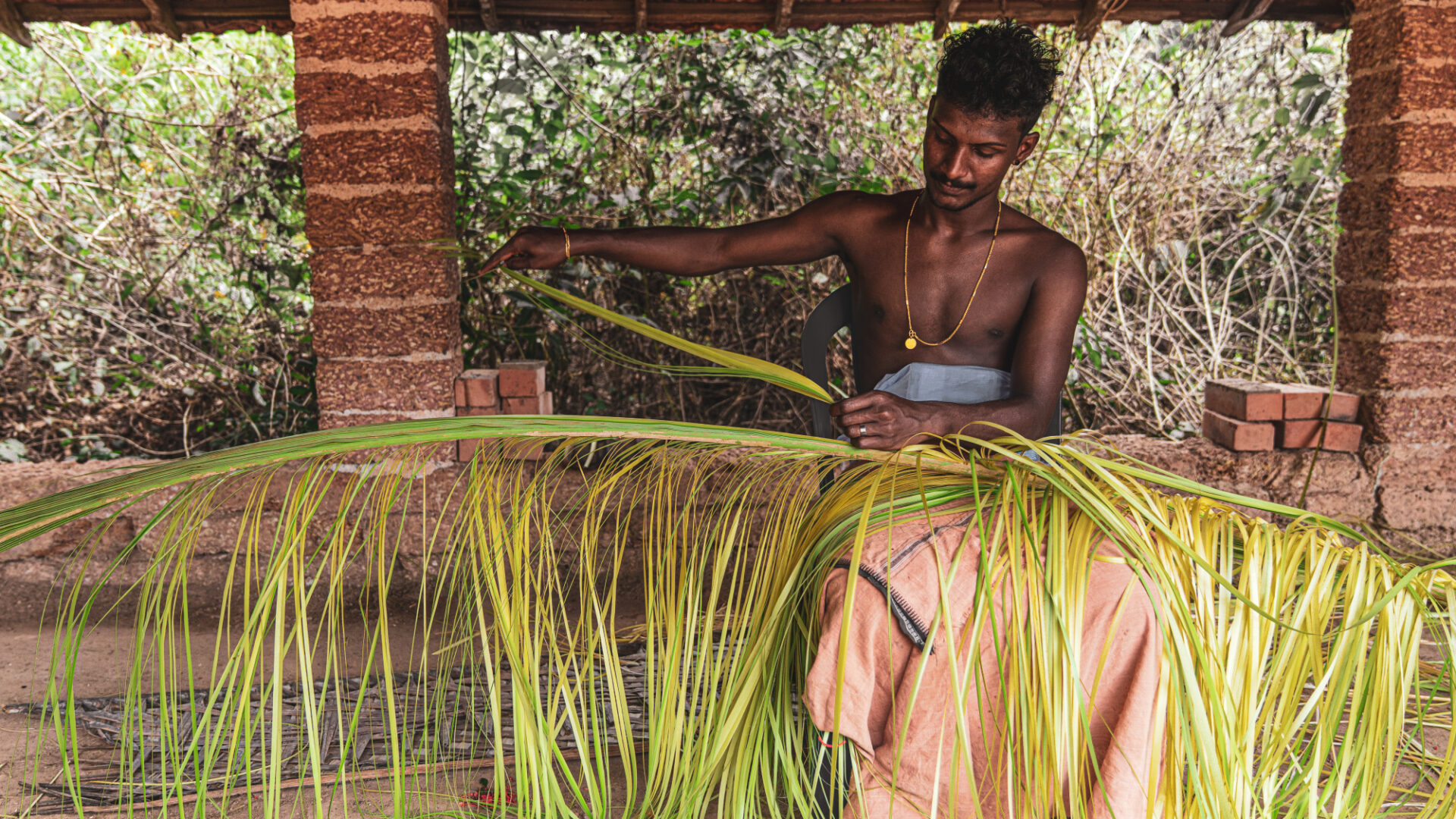
The costumes of Theyyam incorporate materials symbolizing a connection with nature.
Among them, coconut leaves and bamboo—both abundant in Kerala—are widely used as decorations.
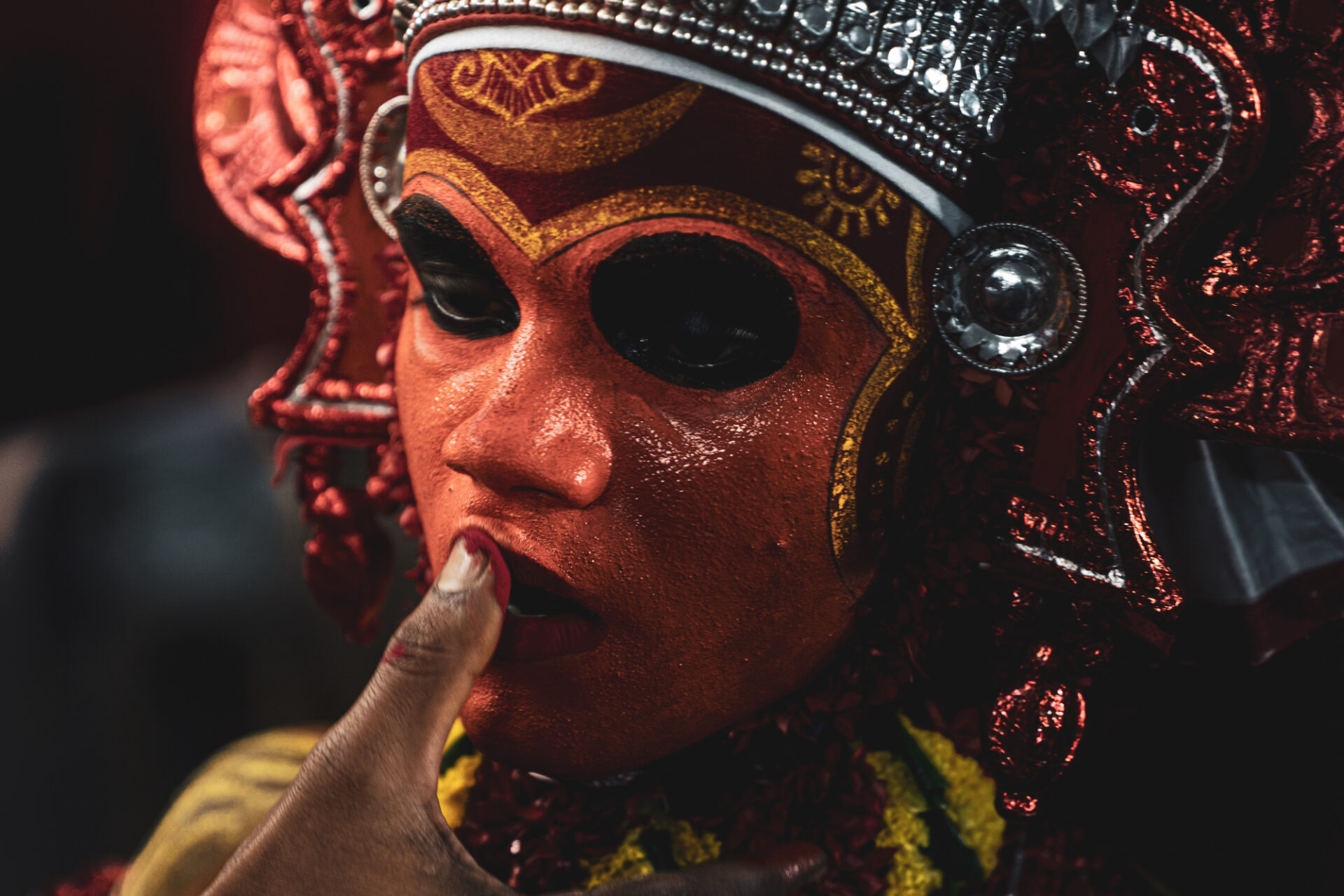
He's having his lipstick applied.
In Theyyam, red and orange are used to symbolize divine power and sanctity.
These colors are deeply connected to saffron, regarded as the most sacred color in Hinduism.
They visually represent the divine presence.
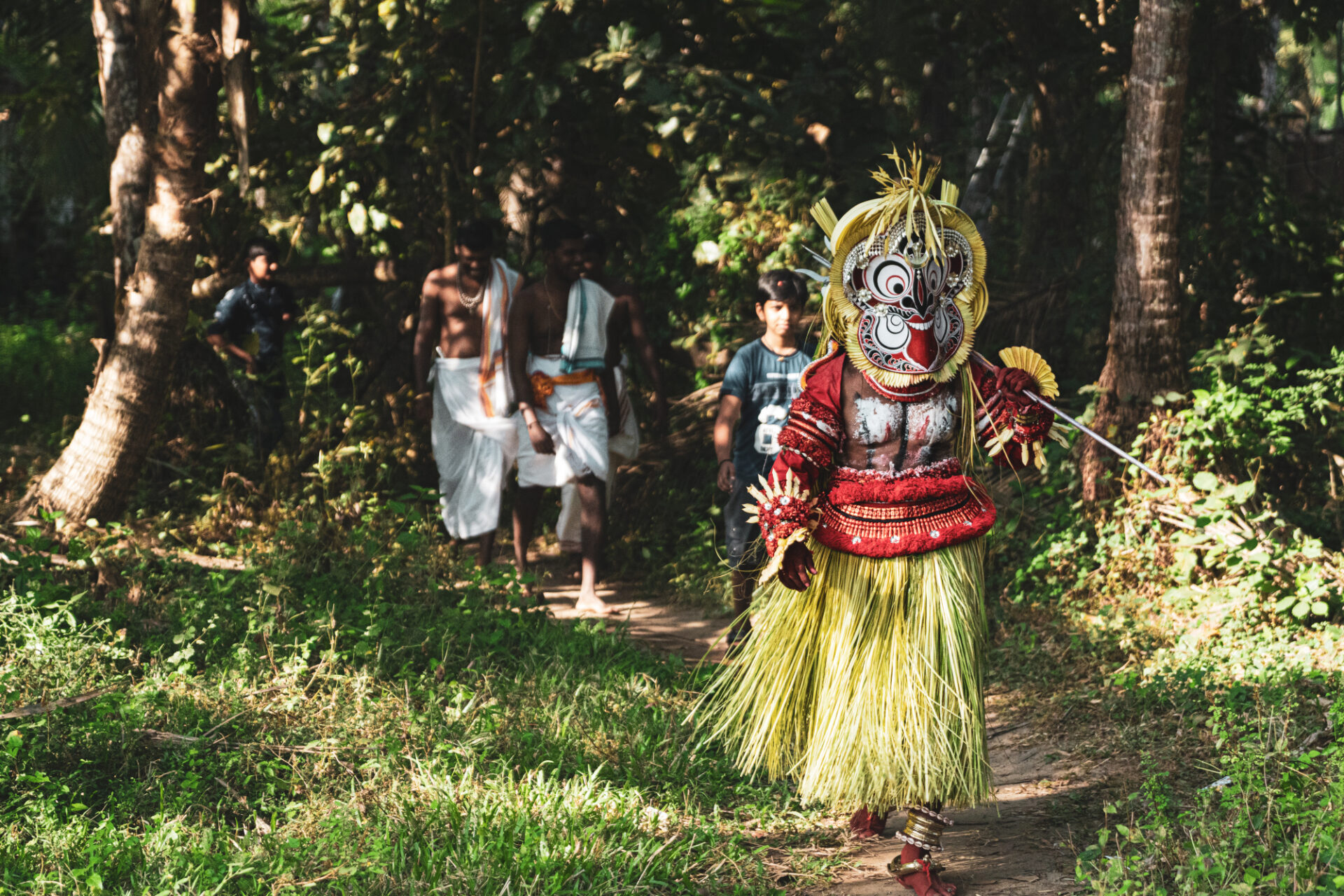
Theyyam rituals are deeply tied to nature and indigenous beliefs.
They are often held in sacred natural spaces within villages,
and the performer walking through nature is part of the sacred procession or transition into the ritual space.

There are said to be over 400 deities in Theyyam, including goddesses,
forms of Shiva and Vishnu, deified humans and heroes,
figures from Hindu epics, animals, spirits, and ancestors.
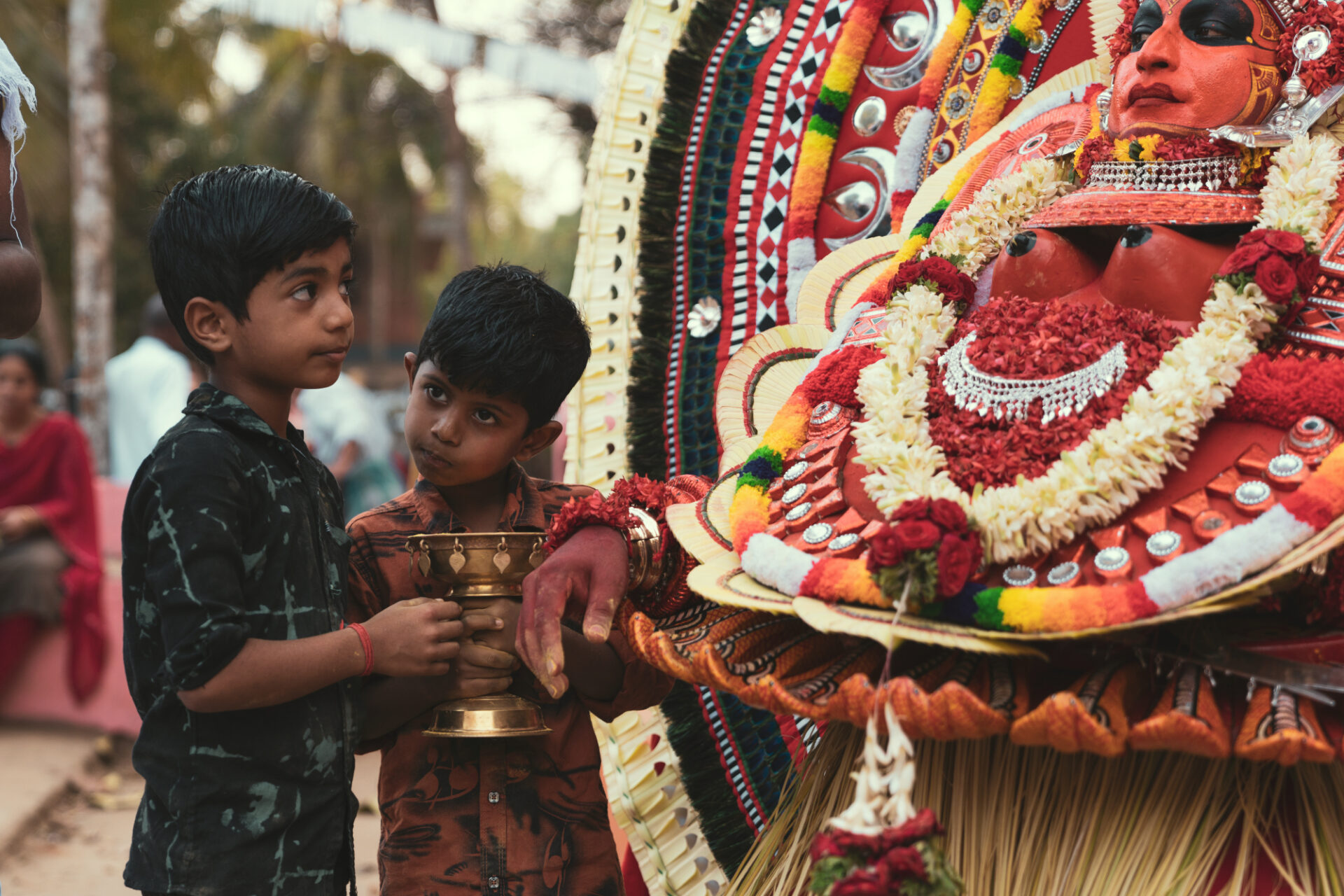
Some Theyyam deities, while sacred, possess a friendly or approachable aura.
Children may feel a sense of reverence toward them while also perceiving them as familiar, comforting figures.
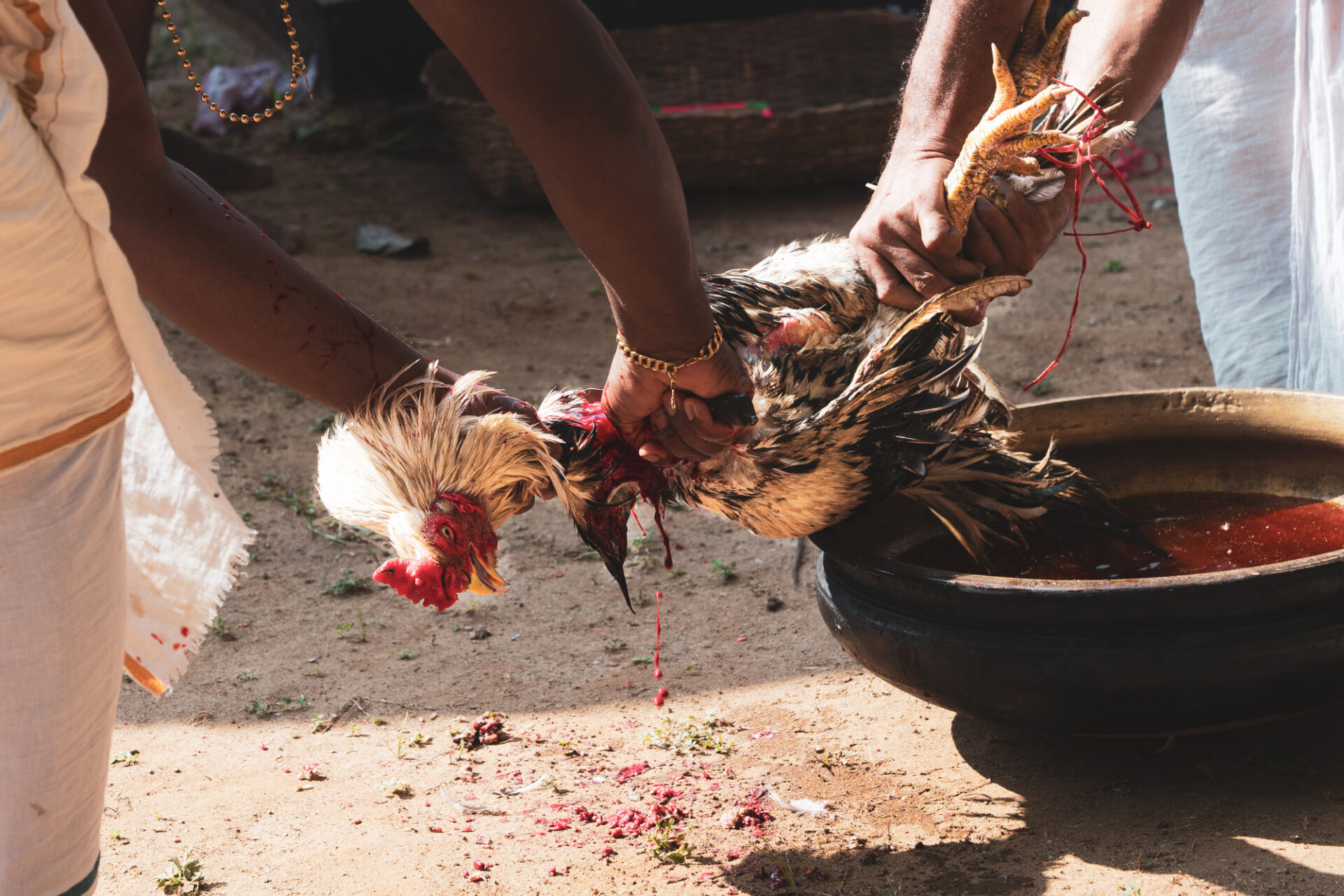
Offerings in Theyyam are rituals of divine invocation, expressing respect and gratitude to the gods.
These sacrifices are believed to ward off misfortune and pray for the safety, good harvests, and health of the community.
When the deity accepts the offering, it is thought to dispel evil spirits and disasters.

Running around with a headless, blood-dripping chicken offered as a sacrifice in its mouth,
and then eating raw meat afterward.
While some Theyyams represent intense and fierce characteristics,
there are also many divine forms, such as the loving goddess Theyyam.
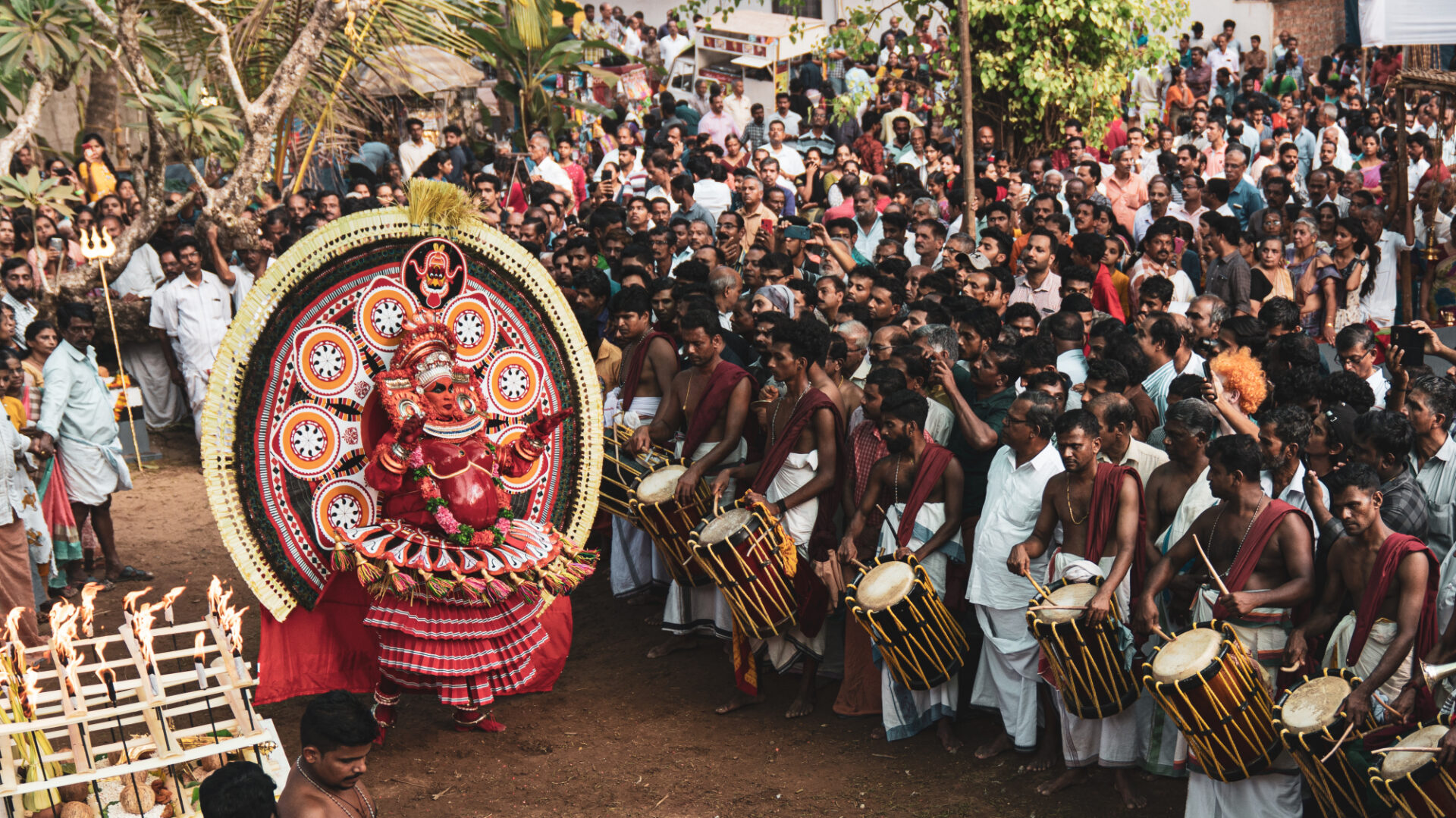
Theyyam festivals celebrated on a town-wide scale are filled with energy and excitement,
as crowds of performers and spectators gather, creating a lively and bustling atmosphere.
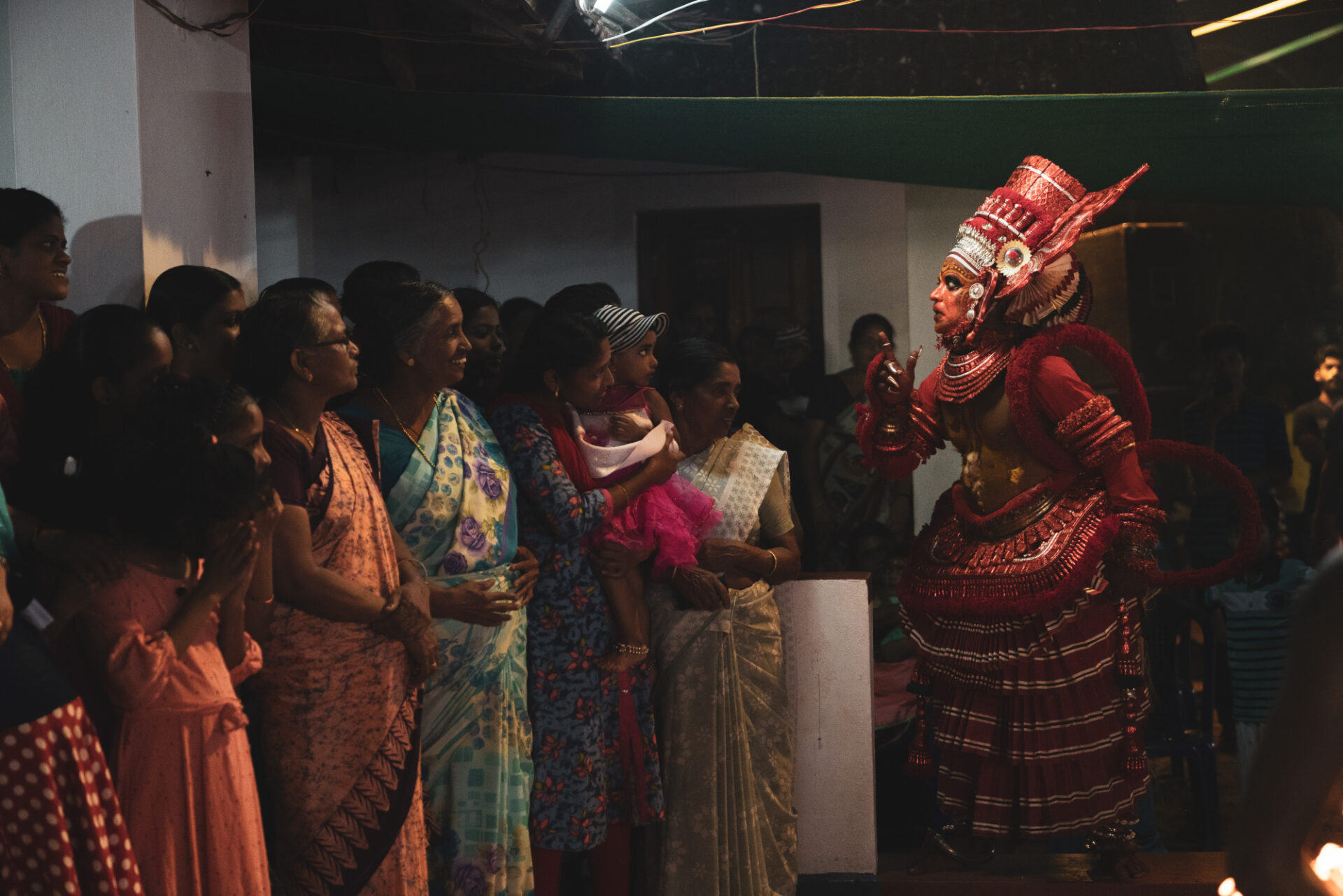
There are also smaller-scale Theyyam performances held among family members and neighbors.
In such cases, women often prepare communal meals in advance, and the event unfolds with a warm,
intimate, and neighborly feel—like a gathering around the village well.
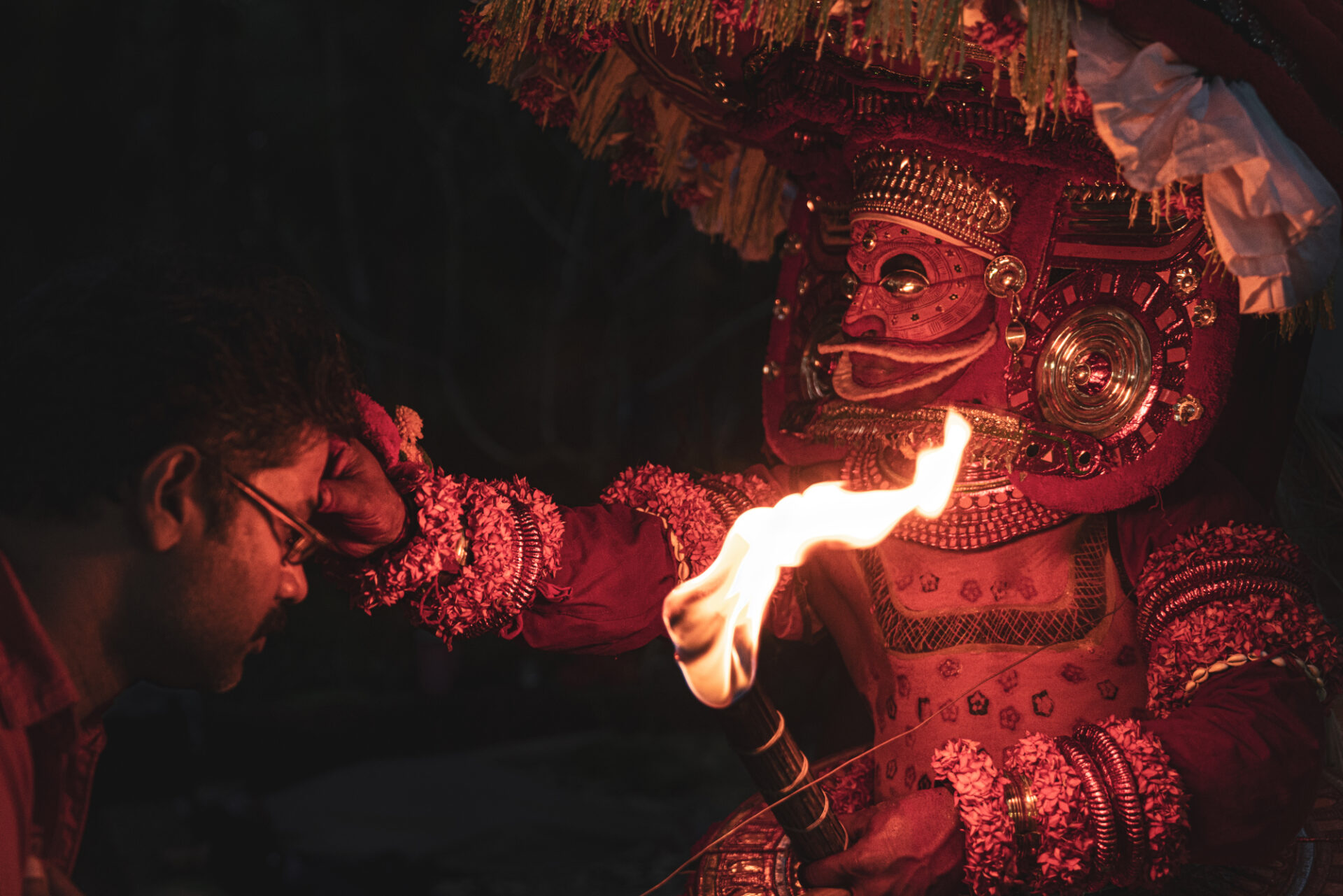
Bestowing a tika.
Some Theyyam deities take on roles such as offering counsel,
listening to people's concerns, or telling fortunes.
These deities are deeply trusted by the local community as spiritual guides,
someone to confide in, and as sources of direction in life.
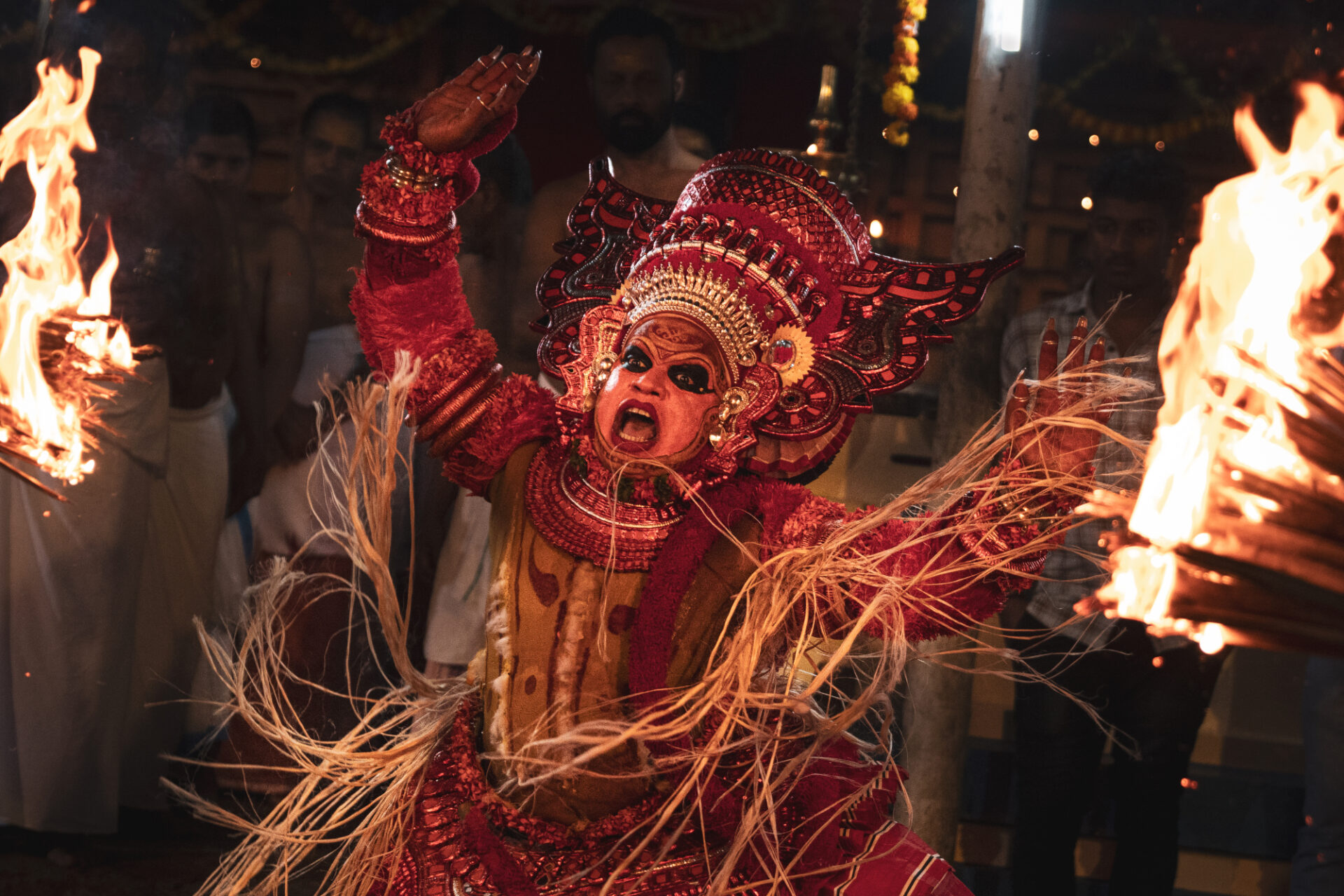
Certain Theyyam rituals involve dancing through roaring flames,
symbolizing the power of the deity, victory over evil,
and the purification of sins and impurities within the community.
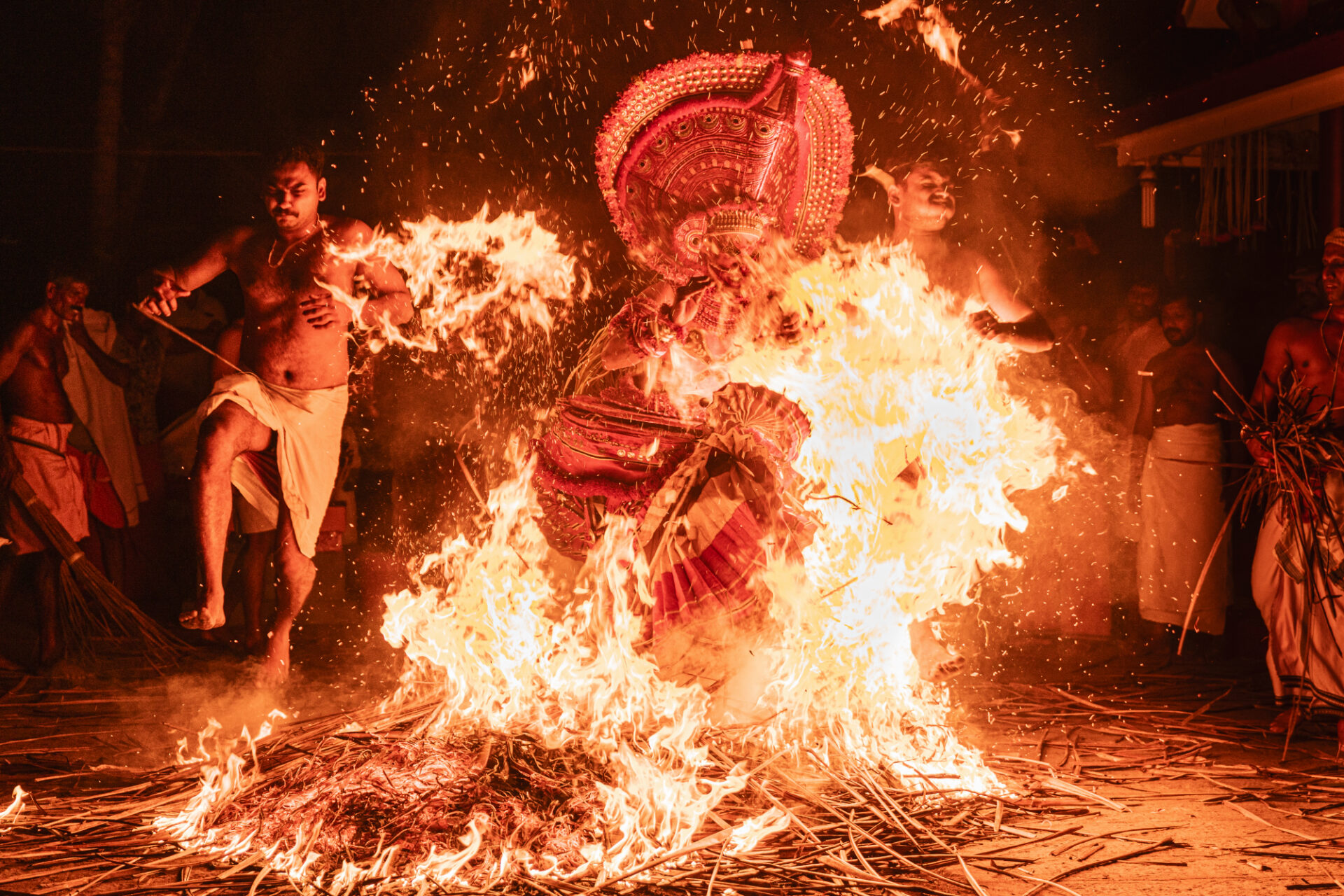
In Theyyam, fire represents immense energy—particularly the strength and ferocity of gods associated with anger or war.
It also symbolizes destruction and rebirth, bringing an end to the old and ushering in new blessings.
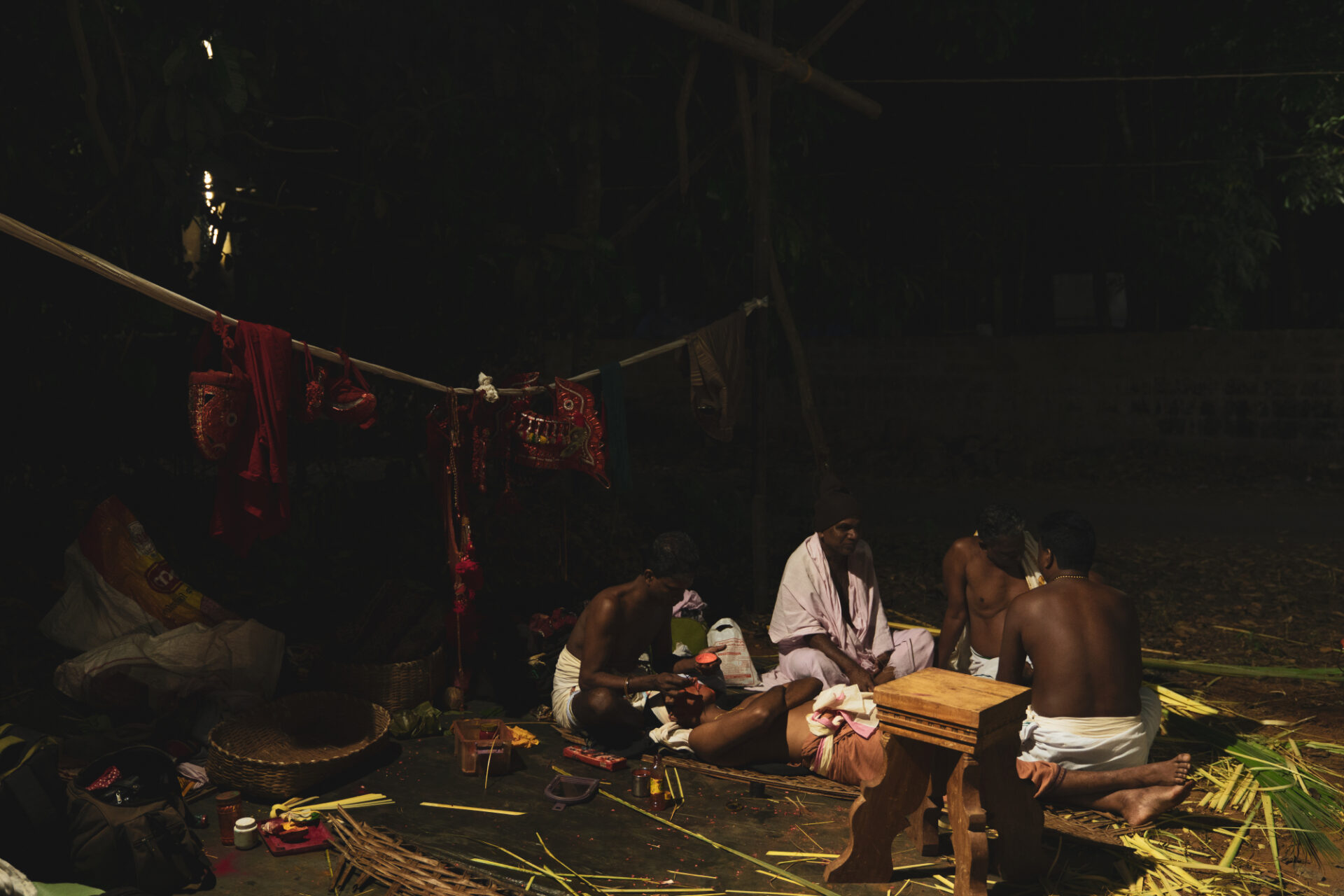
In contrast to the Brahmin-centered religious rituals of North India, Theyyam features male performers from historically marginalized communities who are worshipped as deities during the ritual.
This structure reflects the unique relationship between religious authority and social hierarchy in Theyyam, rooted in its strong ties to indigenous beliefs.
The peak season is from January to April, when performers travel to various temples and ritual sites to present the ceremonies.
The fierce, fiery dances and the thunderous beat of the drums—it was all so intense,
yet strangely nostalgic.
As dusk falls, the prelude to Theyyam begins: small theatrical performances, fireworks, and lively parades.
There's a simple magic to it all, and before I knew it, I was completely absorbed in the atmosphere.
What touched me most deeply were the Theyyam ceremonies held quietly in small villages.
Without grand displays, family members and neighbors come together,
side by side, to create the festival with their own hands.
Once, I had the chance to help prepare traditional dishes alongside the village women.
For that brief moment, I felt like I was truly part of the community—an experience I still treasure dearly.
India is home to countless incredible festivals, but Theyyam holds a special place in my heart.
Amid the lush greenery and coastal breeze of Kerala, its mystique and the people’s devotion linger long after the festival ends.
If I could, I would return every year. That is how deeply this sacred celebration has touched me.
And I must express my gratitude.
Thanks to the help of local photographers, I was able to have a truly wonderful time.
